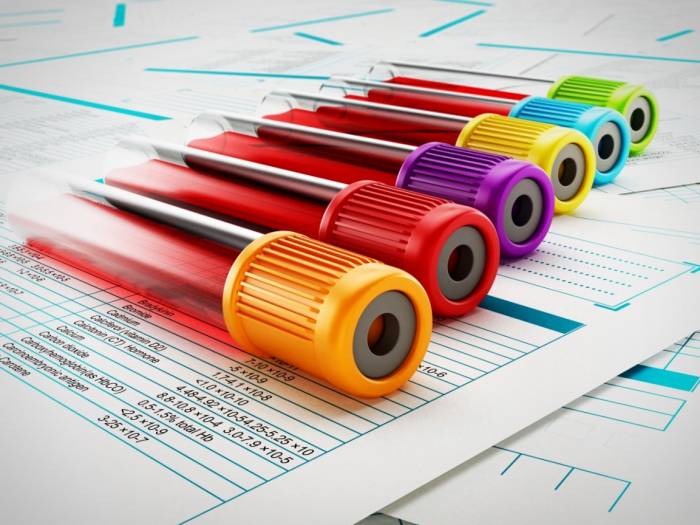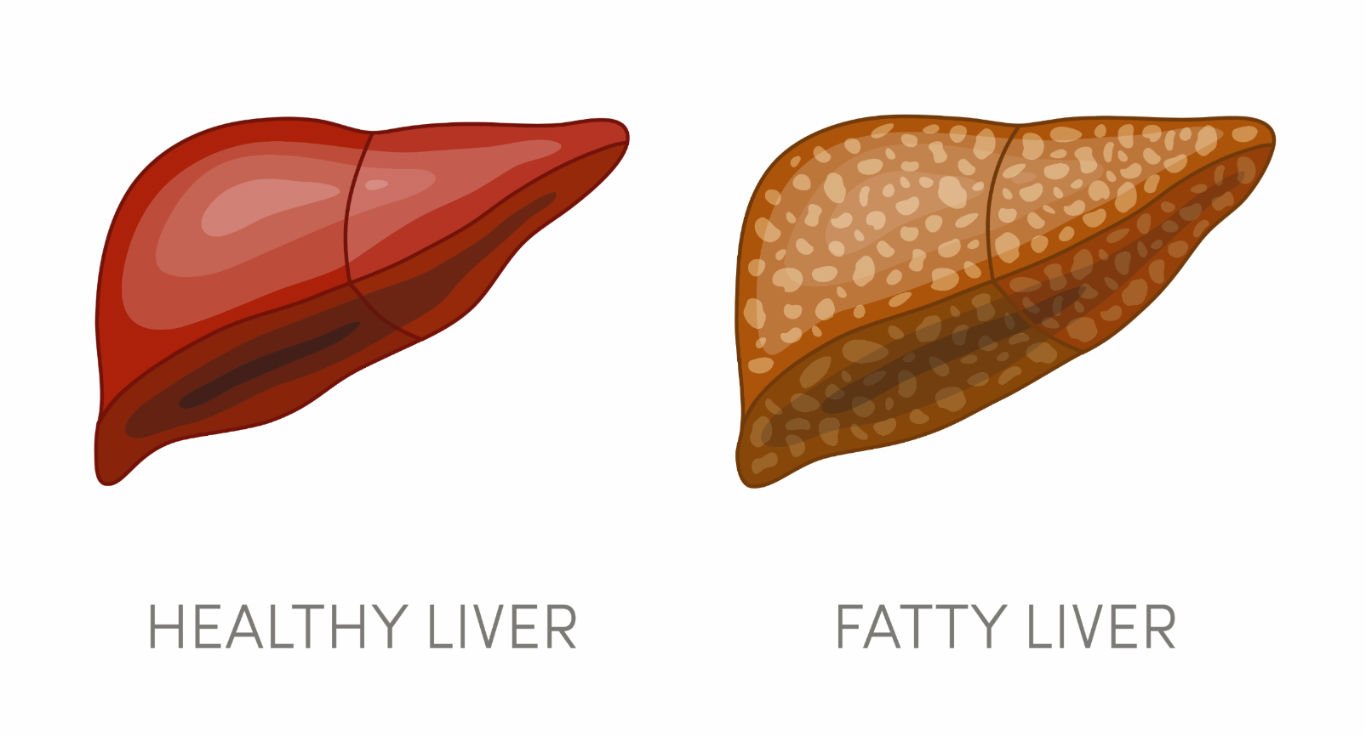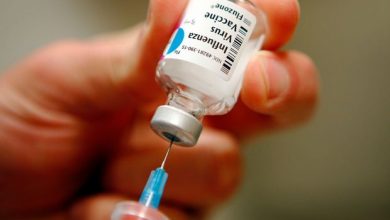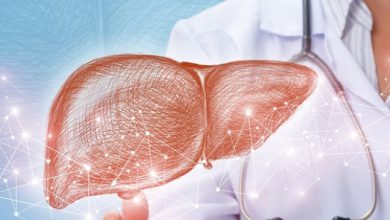Everything you need to know about blood tests and how to read them
One way to diagnose the disease is an initial blood test or blood panel. A blood test can detect disease symptoms, waste products in the blood, and so on. You will be informed of your health status by a visit and a simple blood test prescribed by your doctor after a clinical examination.

After getting the test results, you probably will not understand anything about it, and you should get help from a doctor, but if you expand your knowledge in this field, you can easily read and interpret your test sheet.
Time for periodic blood tests
A blood test is required for each person approximately once every six months. According to their doctor, people with specific diseases should have the necessary tests performed in shorter periods.
The best time to do a blood test during the day
A blood test’s timing depends on the type of test; for example, a blood sugar test should be done in the morning, a cortisol test should be done at 8 am or 4 pm.
Complete blood cell count
A complete blood count, or CBC, examines blood cells for their number, size, appearance, hemoglobin, and hematocrit measurement.
Diagnosis of anemia by performing a blood test
By studying blood parameters such as red blood cell count, hemoglobin level, and hematocrit, anemia can be detected in a CBC blood test.
Diagnose high blood fats with a blood test
Hyperlipidemia can be detected by testing and measuring blood triglyceride levels. If your blood triglyceride level is above 400 mg / dL and your blood cholesterol level is above 240 mg / dL, you have high blood fats.

How many times should we have a blood lipid test?
The most crucial cause of clogged arteries and other arteries is high blood fats. Everyone over the age of 20 should have a simple blood lipid test once a year, including good cholesterol, bad cholesterol, and triglycerides. If the results are expected, the test should be done at least once every 5 years. Repeat for up to 40 years and then every two years for up to 50 years. From the age of 50 onwards, this should be done once a year.
Diagnosis of thyroid disorders by a blood test
Measurement of T3 (regular rate in adults: 1.52 to 1.85 ng/ml), T4 (average speed in adults: 4 to 13 micrograms per deciliter), and TSH (average rate in adults: 0.32 Up to 2.5 micrograms per milliliter). The primary test is done for the thyroid gland. If these numbers are disturbed, the person will develop hyperthyroidism or hypothyroidism.
Blood test and diagnosis of blood sugar
A blood test is needed to determine your blood sugar level. Fasting blood sugar is typically between 70 and 99 milligrams per deciliter, so if your blood sugar rises above 126, you have diabetes. In pre-diabetes, blood sugar is between 100 and 126. The HbA1C test monitors blood sugar levels for some time. If it is higher than 9%, it indicates an increase in blood sugar.

How many times should we have a blood sugar test?
People after the age of 40 should have a blood sugar test once, if the result is typically every two years until the age of 50, and after the age of 50, they should have a blood sugar test once a year. If you have the following conditions, you should have your blood sugar checked regularly:
History of type 2 diabetes in first-degree relatives, body mass index (BMI) 25 or higher, sedentary lifestyle, pregnancy, high blood pressure, good cholesterol level equal to or less than 35, triglyceride equal to or greater than 250 mg DL, a history of multiple ovarian cysts and vascular disease.
Blood tests are a diagnostic method for liver disorders
Blood tests are necessary to diagnose liver disorders, including hepatitis. The simplest liver tests are usually SGPT (standard: less than 31 units per liter in women and less than 41 units per liter in men) and SGOT (standard: less than 31 units per liter in women and less than men). 37 units per liter).
Kidney test
In the blood test, urea (BUN) and creatinine (Cr) are two kidney function tests. If you have hypothyroidism or severe kidney problems, your urea and creatine levels are higher than usual. People with kidney failure, kidney pain, kidney infection, or need dialysis should have these tests done regularly.
The average level of urea in women is between 7.9 to 20 mg/dL, and the average amount of creatinine is between 0.6 to 1.2 mg/dL and in men 0.8 to 1.3 mg/dL.
Who should get a uric acid test?
If your doctor suspects you have kidney stones or gout, he or she may order a uric acid test. Normal uric acid levels in men are 3.6 to 8.2 mg / dL and in women are 2.6 to 1.6 mg / dL.
Need to measure vitamins
Your doctor will do a blood test to measure your vitamins. Vitamins D and B12 are the major vitamins that are usually measured. Vitamin D testing is essential for calcium absorption, osteoporosis, especially in women, absorption disorders, cancer-related studies, including breast cancer, pancreatic cancer, colon cancer.
The average level of this vitamin is between 25 and 80 ng/ml. To check for anemia or some digestive disorders, get tested for vitamin B12, typically between 160 and 950 pg/ml.

Measurement of hormones in a blood test
The doctor uses a blood test to measure hormones and selects different hormones to measure depending on the diagnosis. Because hormones have a wide range. The most common hormones tested are:
Pregnancy hormone (BHCG), thyroid hormones, and sex hormones are requested depending on the type of disorder and gender. The most common sex hormones in men are PSA (to check prostate function) and women LH and FSH.
Mineral measurements in blood tests and for people who do
Children, the elderly, and women of certain ages and conditions with metabolic disorders should be tested for minerals.
Diagnosis of cancer through blood tests
Fortunately, with the advancement of laboratory science, a simple blood test can detect the occurrence of cancers and stop their progression in time. Of course, this depends on timely testing and prompt treatment of the disease.
Cause of bruising of the hand after a blood test
The hand’s bruising is caused by the patient’s skin’s sensitivity, the duration of pressure on the wrong sampling site by the sampler.
Interfering factors as a result of blood tests
Factors that cause false interference with a blood test include:
Medication, Exercise, Blood sampling time (morning or evening), Pregnancy, Anxiety, Depression,
Is an abnormal blood test result is a sign of illness?
Abnormal results alone cannot be the cause of disease. In five percent of healthy people, the test result may be abnormal.
Probability of error in blood tests
Because today’s tests are performed in device automation, the error rate has been minimized. Also, laboratories try to reduce their work errors by performing quality control and calibration of devices.
Critical points before a blood test
Observance of some points leads to accurate answers to tests. Some activities and carelessness cause negative or positive test results to be incorrect or the values of its parameters to change.
Eat a light dinner the night before the test.
Do not drink anything other than water for 10 to 12 hours before going to the food lab, but water consumption also depends on your doctor’s prescription.
I am brushing while fasting is allowed.
Avoid smoking, chewing gum, slimming pills, breast syrup, exercise, and exercise while fasting.
The duration of fasting in blood lipid tests such as triglycerides and cholesterol is at least 12 hours.
8 hours of fasting is enough to measure blood urea nitrogen (BUN). A blood uric acid test requires at least eight hours and an iron test 10 to 12 hours of fasting.
Practical tips before having a blood sugar test
A two-hour blood sugar test is one of the tests needed to diagnose diabetes. After 10 to 12 hours of fasting, the fasting blood sugar (FBS) test is performed. Then, at the doctor’s request, they give sugar syrup in the laboratory or recommend eating breakfast, after which they are tested again after two hours.
Consider the following points in your blood sugar test:
If you have diabetes, eat the breakfast you usually eat every day.
If you do not have diabetes, eat a sweet breakfast containing 40 to 75 grams of carbohydrates.
Keep track of the time after eating your last breakfast, and go to the lab precisely two hours later to get blood.
Do not eat or drink or smoke for two hours after breakfast. Only drinking water is allowed.
It would help if you did not have any unusual activities such as exercising and walking between the first and second blood draws.
Do a two-hour fasting sugar test one day.
Be sure to start the test before 10 a.m. until the two-hour sugar test is completed by noon.
Essential points about diet before performing various blood tests
Have a regular diet one week before your blood cholesterol test, but do not lower your fat intake.
Avoid overeating meat for at least two to three days before a blood urea nitrogen (BUN) test.
Alcohol consumption increases liver enzymes, including alkaline phosphatase, SGOT, SGPT.
The night before the iron test, you should not eat iron-rich foods such as red meat.
Basic recommendations before prostate testing
PSA test is done for early detection of enlargement and prostate cancer. Mid-life is recommended for men regularly and at least once a year.
Here are some things you can look for when choosing a prostate test:
Prostate examination, biopsy, or rectal examination should not be done one week before the test.
Do not ejaculate or have sex for 48 hours before the test, and do not ride a bike during this time.
If you have had an ultrasound of your prostate in recent days, report it to your lab technician.
Radiation therapy and testosterone increase the results of this test. Tell your doctor or lab technician.
It is better to go for a testosterone sample in the morning because it is higher in the morning.
Recommendations for pre-urinalysis
A complete urine test is done to detect and confirm certain substances and cells, including sugar, protein, white blood cells, and red blood cells. If there is an infection in the urine, it can be detected by culturing the urine. In this case, with the growth of bacteria that cause disease, the type and treatment method are determined. Urine test results and tests, especially for the diagnosis of infections, when the urine sample is contaminated, when collecting is defective. So pay attention to the following points:
Things to look for before a urine test:
The first-morning urine is the best example for diagnosing urinary tract infections.
The night before the test, useless watery substances break entirely down urine. Also, avoid drinking large amounts of water and fluids before the test.
Before sampling, rinse the urethra with soap and water and pat dry with disposable tissue.
After emptying the first few drops of urine in the toilet, fill the sample container halfway.
A urine culture test should be done before starting antibiotics. If you have been taking antibiotics for the past week, it is best to tell your doctor.
Note: There is usually no protein in the urine. Urine protein excretion is a sign of kidney damage, diabetes, or high blood pressure.
Reason for not performing thyroid test after surgery
Surgery puts a lot of stress on a person, and these stresses reduce the level of thyroid hormones. Therefore, it is recommended that you do not have a thyroid test for two weeks after surgery. Other factors, such as birth control pills and amiodarone (heart medication), also increase stress hormones. Thyroid hormone levels are 20% lower in summer than in winter.
24-hour urine test
In 24-hour urine tests, we need factors to diagnose the disease, especially kidney disease. Qualitative and rapid assessment of disorders detected through urine is possible through regular urine tests.
Consider these tips in a 24-hour urine test:
Urine samples should be collected within 24 hours, so you will be given a gallon through the lab that contains liquid or solid preservatives; you should avoid emptying or smelling these substances.
Drink fluids generally during the test.
To collect the sample, set aside the first urination, then write down the exact time, and then collect the entire amount of urine in a particular container for 24 hours.
Store the sample container in a cool place.
also read:
Normal blood sugar levels during pregnancy










